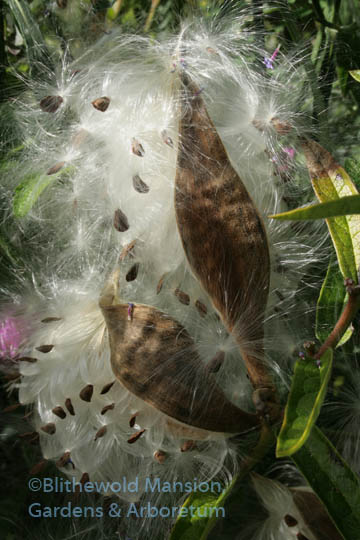Let’s grow natives
 I’m still on seedheads. Yesterday afternoon Gail and I attended a workshop on propagating Rhody Natives (in caps because it’s an initiative spearheaded by the RI Natural History Survey and the New England Wildflower Society to get commercial nurseries involved in propagating Rhode Island’s own native plants both for conservation projects and to sell in garden centers. Really exciting stuff.) We learned a few tricks from Kate Pawling, plant propagator at Nasami Farm Nursery, Harry Chase a wholesale grower in Portsmouth, RI, and Dr. Bryan Maynard, professor of horticulture at URI.
I’m still on seedheads. Yesterday afternoon Gail and I attended a workshop on propagating Rhody Natives (in caps because it’s an initiative spearheaded by the RI Natural History Survey and the New England Wildflower Society to get commercial nurseries involved in propagating Rhode Island’s own native plants both for conservation projects and to sell in garden centers. Really exciting stuff.) We learned a few tricks from Kate Pawling, plant propagator at Nasami Farm Nursery, Harry Chase a wholesale grower in Portsmouth, RI, and Dr. Bryan Maynard, professor of horticulture at URI.
So much about propagation involves a kind of science that makes my artist’s right-brain spin but when it comes right down to it, the most important thing is to simply pay attention to the way the plant works. For instance, plants native to New England that set seed in the spring need a warm stratification period before a cold one to germinate. Interestingly, a lot of spring seeds cannot be stored dry. Some plants, like native ginger (Asarum canadense) coat their seeds in a fatty substance ants love to eat and when they’re finished they discard the cleaned seed in their rubbish pile, which happens to be a perfectly situated nutrient rich place for a new plant to grow. For best results, spring seeds should be sown as soon as possible after collection. Makes perfect sense.
The opposite may be true of fall-set seeds. They often have a tough seed coat that needs to go through winter’s freeze and thaw cycle to crack and germinate. Try to sow them without stratification and they probably won’t come to anything. By leaving seedheads up in the garden to ripen we’re giving Nature the chance to do it her way and we love seeing where they’ll sow themselves next. Whenever we want to take the reins, we just need to mimic nature’s processes as much as possible.
At Nasami farm, Kate sows seeds in December, covers the trays in quartz filter sand to suppress moss growth (it still lets light in for the seeds that need it), puts the flats in a cold greenhouse, and makes sure the soil temperature in the trays hovers just below freezing. The only tricky thing she does is pay close attention to soil and water pH. When Harry sowed his Rhody Native seeds last year, he treated them with the same TLC he gives his commercial crops of annuals and perennials, kept them from freezing and nearly killed them with kindness.
Have you tried sowing wild seeds? Did you give them the tough love they require? Would you buy more locally grown native plants if they were available?

